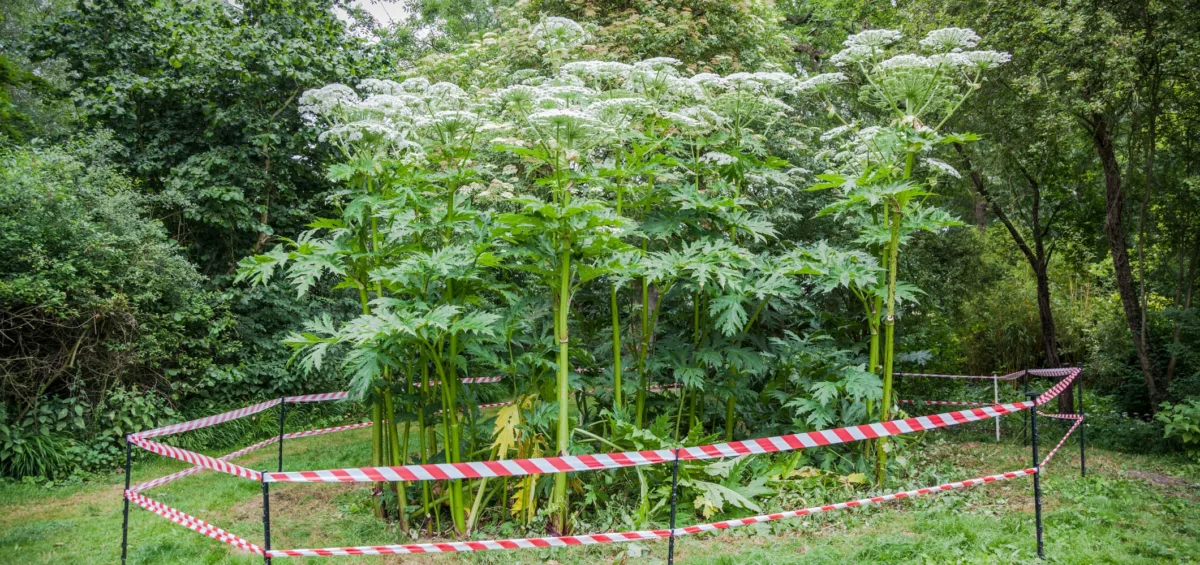Invasive plant species are more than just an annoyance to any green-fingered homeowner. These weeds can also cause structural damage to your home and massively affect its value, and harm natural habits and wildlife.
HOW DOES UK LAW COVER INVASIVE PLANTS?
The Wildlife and Countryside Act (1981) recognised the need to control certain species of invasive plants and animals already causing a problem in the UK, listing them in Schedule 9. Originally only giant hogweed (Heracleum mantegazzianum) and Japanese knotweed (Fallopia japonica) were listed.
However, in April 2010 a further 36 invasive plants were added and a further amendment in 2014 banned the sale of five of the worst invasive water plants in the UK.
Did you know? It is a criminal offence to plant or cause to grow a non-native invasive species listed in the act and this carries penalties of up to £5,000 fine and/or 2 years imprisonment.
We rounded up some of the worst offenders, most of which are so damaging to the environment they’re actually illegal to grow in the UK.
JAPANESE KNOTWEED
Status: Illegal to allow Japanese Knotweed to spread in the UK
Japanese knotweed was originally brought to the UK as a decorative plant given its pretty white flowers which bloom in warm spring and summer. However, this plant is incredibly invasive and it is estimated that Japanese knotweed costs the UK economy £166m per year.
Despite the fact this plant can only spread by its roots as it doesn’t produce seeds, its root system is strong and fast-growing. The plant can devalue properties by up to 20% and most money lenders will not lend unless there is an insurance-backed guarantee. Removing the weed is very difficult. Many people try digging out the weed, but if even a small part of the root is left, it can produce an entirely new plant.
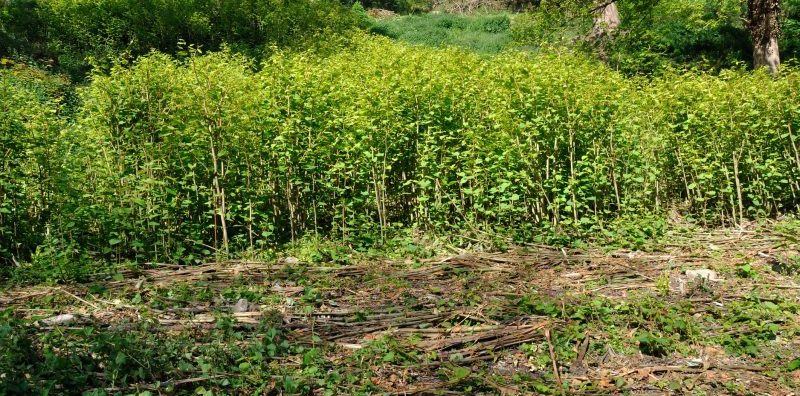
We only use removal companies who provide an insurance-backed guarantee when making a claim for a client. Find out how we can help you with a Japanese knotweed claim.
The best route for removal is a chemical spray or, depending on your property value, an excavation. Of course, this treatment is very expensive which is why many opt to getting treatment done as part of a legal claim.
Read about our client who had lived with Japanese knotweed for over eight years and received £27,000 from the council who had neglected to control its growth.
Japanese knotweed is regarded as ‘controlled waste’ under the Environmental Protection Act (Duty of Care) Regulations and, should be disposed either by burning or in registered land-fill sites due to how hardy the plant it.
Did you know? Clearing the Olympic site of Japanese knotweed cost an estimated £70 million!
GIANT HOGWEED
Status: Illegal to plant or allow to grow in the UK
Giant hogweed looks similar to an overgrown cow parsley, able to grow 10 feet high. The plant spreads through its seeds, which can be carried by birds and other animals, or along waterways. Although not as difficult to control as Japanese knotweed, it still needs a considerable amount of attention to prevent spread.
The plant’s sap contains toxic chemicals which react with light when in contact with human skin. This causes blistering within 48 hours and means that mowing or weeding the plant yourself without proper equipment is difficult.
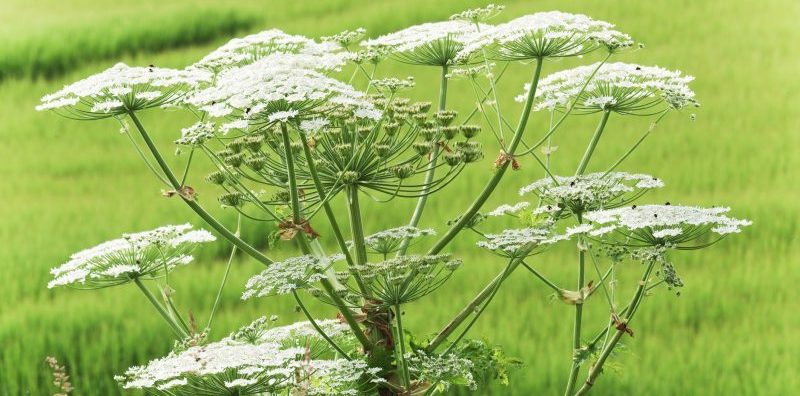
Similar to Japanese knotweed, it is illegal to allow this weed to grow onto neighbouring properties, meaning that you can make a legal claim if it has spread to your land. We can also instruct a removal company to help eradicate the plant permanently from your property as part of the claims process.
Did you know? Research indicates that it takes at least ten years to eradicate giant hogweed
HIMALYAN BALSAM
Status: Illegal to plant or to allow to grow in the UK
Himalayan balsam is a relative of the busy Lizzie but reaches well over head height, and is a major weed problem, especially on riverbanks and waste land, but can also invade gardens. It grows rapidly and spreads quickly, smothering other vegetation as it goes.
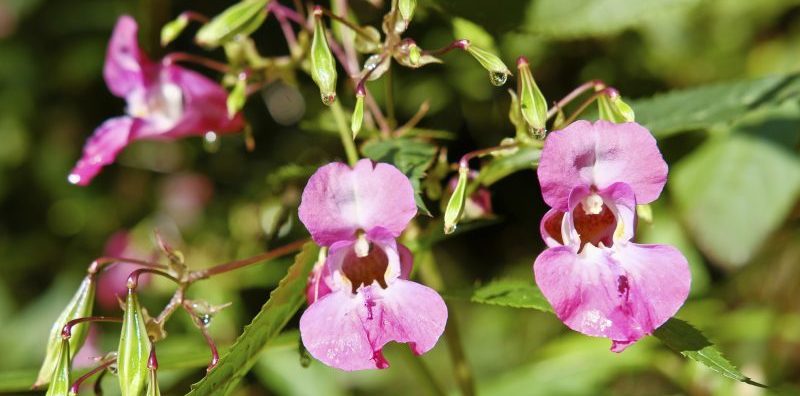
It displays pretty pink flowers and as such the plant is often spread by people passing on seeds to friends to use in their gardens. The other distribution method is via waterways, in which the seed can remain viable for two years. With each plant producing over 800 seeds every year, this means huge potential growth.
Did you know? Himalayan balsam has spread at the rate of 645 km²per year in the UK
NEW ZEALAND PYGMYWEED
Status: This is one of the five water plants now illegal to sell in the UK
This invasive species grows primarily in water, or soil with a heavy water content next to lakes and streams.
Due to the dense matting it creates on the surface of ponds, it can reduce the oxygen available to fish and frogs, making garden ponds virtually uninhabitable. The plant grows so densely, it is often confused for dry land making it particularly dangerous to children and pets.
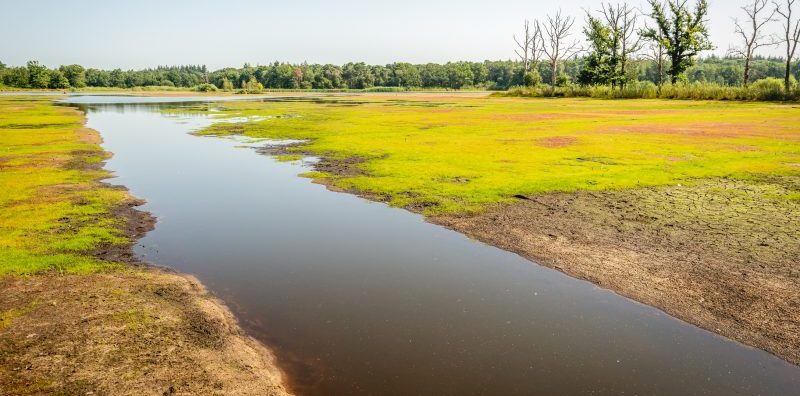
The plant doesn’t die much in winter, meaning its mass grows exponentially year on year making it difficult to manage. However, despite this, this plant is generally found to be more widespread in the south east and north west of England.
Did you know? The plant is also known as Australian swamp stonecrop and was introduced to Britain from Tasmania in 1911
GREEN ALKANET
Status: Not illegal to allow to grow in the UK
Green alkanet is a perennial found growing wild in damp and shady places. Often cultivated in gardens due to its pretty blue forget-me-not-flowers, the plant quickly becomes a weed in the right environment. It can self-seed and so grows new plants close to the parent, but it is also distributed long distances on animal fur or clothing.
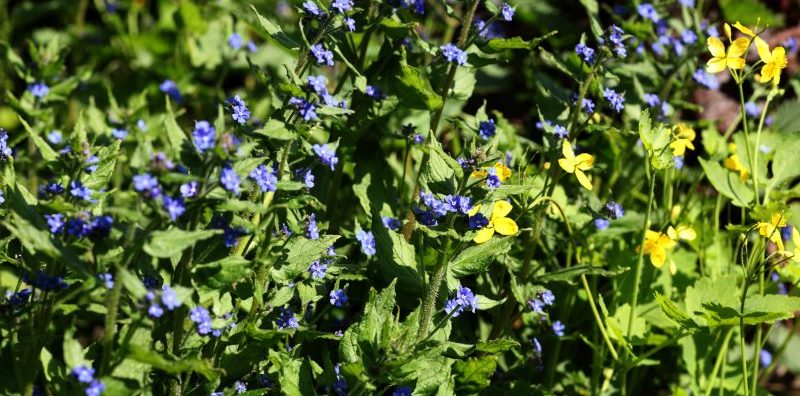
It has tall, hairy stems, bristly leaves and bright blue flowers with a white centre that open from a pink bud. While it is a weed, it is much more manageable than others on the list, though just as difficult to completely eradicate.
THREE-CORNERED GARLIC
Status: Illegal to plant or allow to grow in the UK
This plant was brought to the UK in the 18th Century from the Mediterranean. This plant is regarded as invasive as its pendent white flowers have large seeds which are attractive to ants. The ants act as a distribution and so the plant readily grows in the wild and is found along roadsides banks and verges, hedgerows, woodland edges, field edges and on waste ground. It forms very dense colonies that can outcompete other spring flowers like primroses and violets. On some roadside verges and banks it forms dense stands spreading many meters. It is most common in southern and western Britain, but is on the rise and spreading further north.
Did you know? All parts of this plant are actually edible!
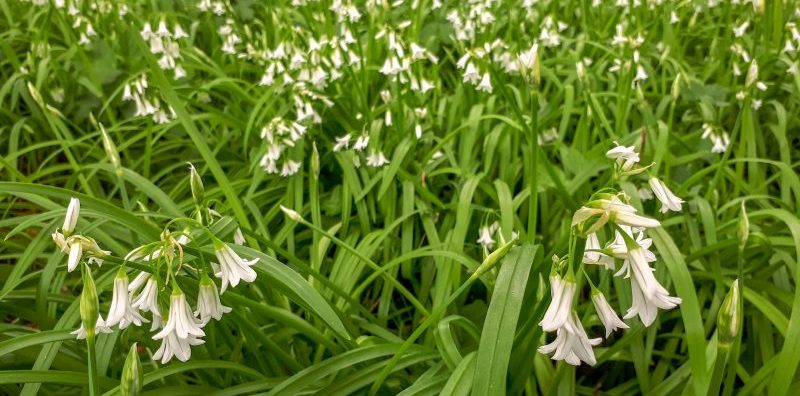
RHODODENDRON PONTICUM
Status: Illegal to plant or allow to grow in the UK
Rhododendron was first introduced to the UK in 1763 for use in gardens and today there are few areas of the UK not affected by this invasive plant. Each plant can produce one million or more tiny seeds each year that spread in the wind, and it’s incredibly difficult to remove by digging it up or using herbicides.
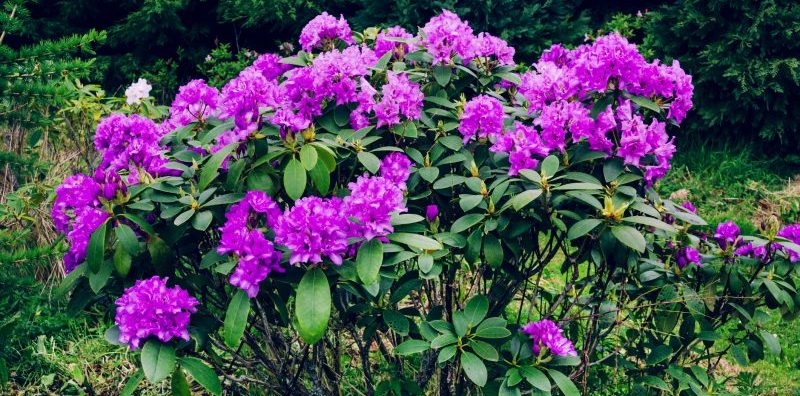
The shrub is classified as an invasive weed due to its fast-growing nature which causes damage to woodlands, heaths and meadows. The huge bushes on the plant block out sunlight from plants underneath, smothering most other wild plants and trees and leaving only plants that are able to grow above the rhododendron canopy. Not only that, its leaves are actually toxic to some animals and it carries diseases that are fatal to native trees.
Did you know? Many types of rhododendrons can live for hundreds of years.


